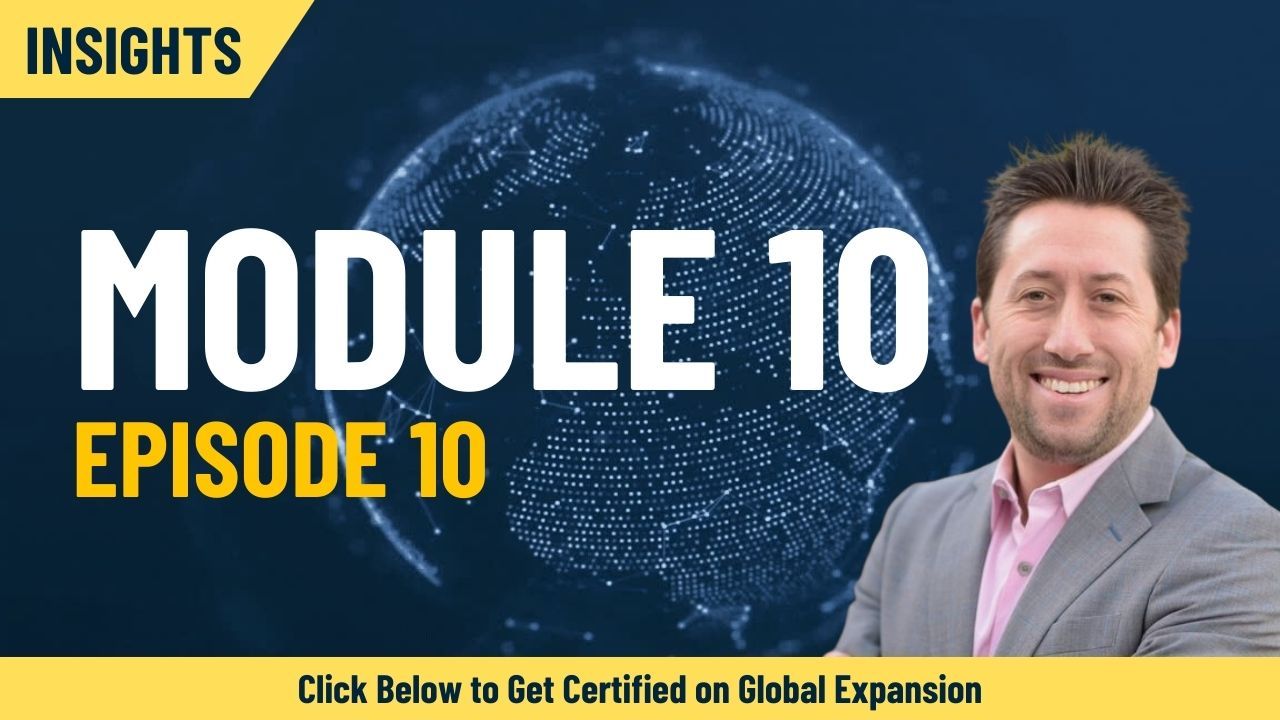Module 10 Episode 10: Mastering Global Management: The GCMM, Decision Rights, and 10 Best Strategies for Success

Read the full script of Module 10, Episode 10 of the Global Growth Master Class below. Want to get certified on global expansion? Simply click here to access the complete course today.
Let’s recap what we covered in this module.
We went through the Global Class Management Model, illustrating how when combined, all the frameworks and concepts within the course build a bridge between the company and local markets across the globe. How the Global Agile Methodology serves as a foundation for the pillars of growth, a Strong Local Team, and Momentum Builders. How HQ shares the company vision and goals across the bridge roadway while local teams share required locations across the span, with constant communication and translation occurring between HQ and local teams, facilitated by Feedback Loops. Then how the cables, the company culture main cable, and trust point vertical cables support the entire structure.
We also detailed the following:
-
the importance of building a bridge and trust between HQ and local teams, while effectively splitting decision rights between them, so that HQ isn’t the ultimate decider on everything, allowing for autonomy that empowers local teams and leads them to better localizations and traction in the market.
-
How to practice culturally conscious management, leveraging a contingency approach, managing in a way that considers both your centralized operations but also respects local culture.
-
Finally, we outlined how to eliminate an “us” vs. “them” mentality between HQ and local teams, navigating cultural differences and putting HQ not on a pedestal, but as a support structure, enabling local teams.
Now you understand how all of the concepts come together, fueled by the Global Class Mindset, accelerating companies toward achieving their goals of global scale.
👉 Click to Get Certified on Global Expansion 👈
In the module we helped you answer the questions:
-
How do I manage a distributed organization building a bridge between HQ and distributed Local Teams?
-
How do you foster a healthy dynamic between HQ and local markets?
-
How do you build trust within your organization to support scale?
-
How do we divide decision-making between HQ and local teams?
-
How can an organization effectively prioritize at global scale?
-
What management best practices Global Class Companies implement to succeed at scale?
As you look to implement the concepts outlined in this module within your company, consider the following questions and outline your answers:
-
How is your organization managing decision rights between HQ and local teams? How have you mapped them out?
-
How have you built trust points throughout your organization?
-
What management best practice resonates most with you? Which do you/ your organization need to work on? Which are you/your organization the best at?
Important Exercises:
To apply the concepts from this module we suggest that you go through three X quick exercises related to management: the market readiness process:
-
List all the key decisions that must be made (regularly and infrequently) within your organization, mapping out who has Decision Rights for each. For the areas where decision rights have not been formalized, or you are not 100% sure who would decide, get your team together to set clear decision rights.
-
Evaluate how effective your organization has been at implementing the 10 management best practices outlined in the module. Where can you improve? Build action plans to create positive change
-
Analyze how well your organization has built its bridge. Are the pillars strong? Does the roadway reach all the way between HQ and local markets? Are Feedback Loops working to facilitate Two-Way Innovation that not only comes from HQ but comes from Local Markets? Do trust points exist across functional areas and regions? Is company culture consistent and supporting the entire operation?
If you are interested in discussing how to overcome your current challenges managing across a global footprint and implementing the Global Class Management Model, we would be happy to have a free consultation with you. Just schedule a call with us and we can help.
With all of these tools in your global growth toolbelt, now it’s time to summarize everything you have learned, discussing the next steps and how to use these frameworks and insights to be a catalyst for the global growth of your organization.
NOTE: Don't miss out on the next episode! If you want to continue learning about global expansion strategies and dive deeper into the course material, simply click here to access Module 11, Episode 1 of the Global Growth Master Class.


